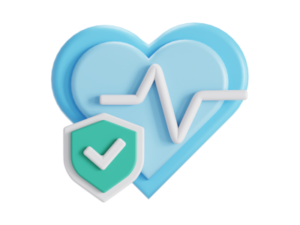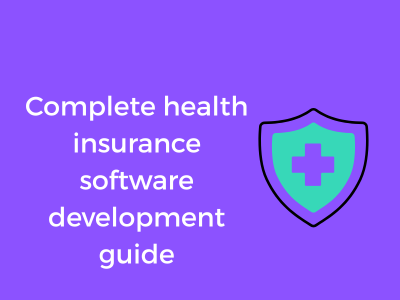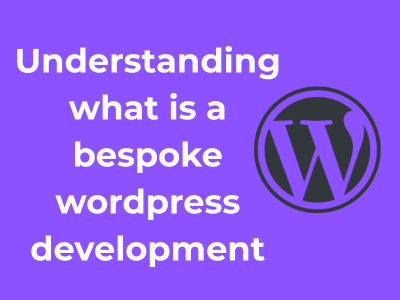Let’s get started by diving into the “why” behind health insurance software development. Before coding a single line or sketching out user flows, it’s crucial to identify the core objectives. Why does this software matter, and what problems is it solving? Think of this as the backbone of everything.
Key Features Every Health Insurance Software Must Include
Hey there, reader! So, you’re diving into the world of health insurance software development? That’s awesome! Designing effective software for this field isn’t just about cool interfaces or shiny dashboards – it’s about making life easier for patients, providers, and insurers. To do that, you’ll need to include some key features that hit the mark on functionality, efficiency, and user-friendliness.
Let’s break down the features your health insurance software *must* have to keep everyone happy and your software competitive. Ready? Let’s go!
1. User-Friendly Interface (UI/UX)
Imagine trying to navigate a maze without a map – frustrating, right? That’s what using clunky software feels like to users. A clean, intuitive, and responsive interface is non-negotiable. Whether it’s a patient checking claim statuses or a provider updating patient information, ensure the navigation process is straightforward. Always prioritize accessibility by integrating features such as larger font options, contrast customization, and simple navigation menus.
2. Automated Claims Processing
Simplifying claims management is the holy grail of health insurance software. Automating claims submissions, tracking, and processing reduces errors, saves time, and minimizes manual intervention. Best of all? Everyone – from patients to providers – loves a seamless process that eliminates unnecessary headaches and paperwork bottlenecks.
3. Eligibility Verification
Ever had to spend an eternity confirming if a treatment is covered? With eligibility verification integrated into your system, that’s a thing of the past. This feature ensures that users can instantly verify coverage details, copay amounts, or exclusions, saving time for both providers and patients. Talk about a win-win!
4. Analytics and Reporting Tools
Data-driven decision-making is king. By incorporating robust analytics features, you empower insurers and providers to track trends, adjust policies, and optimize operations. Whether reviewing claims turnaround times or identifying cost-saving opportunities, built-in reporting tools are essential in today’s data-centric world.
5. Patient and Provider Portals
As more users demand on-demand access to information, patient and provider portals have become a must-have. Patients should be able to review covered benefits, make premium payments, and submit claims, all in one place. At the same time, providers should have access to essential information like treatment authorizations, network details, and patient data – all through a streamlined portal interface.
6. Payment Integration
You simply cannot overlook seamless payment management. Whether it’s collecting premiums, disbursing payouts, or managing refunds, incorporating secure and flexible payment systems keeps users coming back. Remember to offer multiple payment methods (credit cards, bank transfers, digital wallets, etc.) to keep things convenient.
7. Telemedicine Compatibility
In today’s age, telemedicine is no longer optional – it’s a necessity. Ensure your software can work hand-in-hand with telemedicine platforms, facilitating virtual consultations that connect insured patients with healthcare professionals. Bonus points if your solution can process and manage claims for telemedicine appointments!
8. Compliance Management
Health insurance is a heavily regulated industry, with ever-evolving compliance standards like HIPAA and GDPR. Developing software with built-in compliance checks keeps your product future-proof, avoiding any regulatory hiccups down the line. Don’t skimp here – staying compliant is key to safeguarding sensitive patient and provider data too.
9. Mobile Compatibility
Let’s face it – everyone’s glued to their phones. A mobile-friendly version of your software broadens accessibility, offering users the ability to manage their insurance on-the-go. Whether via an app or responsive web design, this is a must in today’s mobile-first world.
10. Chatbots or Virtual Assistants
Customer support has evolved, and AI-powered chatbots or virtual assistants are now the standard for answering FAQs, guiding users, and offering 24/7 support. Whether it’s assistance with claim tracking or basic policy info, this little add-on works wonders in boosting user satisfaction.

Essential Steps in Planning Your Software Development
Launching into health insurance software development can feel like navigating uncharted waters. But don’t fret! With a well-structured plan at your disposal, you can confidently set your project on a path to success. Let’s walk through the essential steps in planning your health insurance software development, shall we?
1. Clearly Define Your Project’s Purpose
Start with one crucial question: “Why are we building this software?” Understand your target audience—be it insurance providers, agents, or the insured—and become laser-focused on their pain points. For instance, are you striving to simplify claims processing? Or maybe you’re building a platform to provide better policy management? By pinpointing a clear purpose, you’re already tailoring your software for success.
2. Identify Core User Needs
Your users are your compass. Brainstorm features that address their pressing needs. Do they want easier access to policy details or secure document uploads? Map out user journeys to ensure your software delivers a frictionless experience.
It’s handy to create personas—fictional representations of your users—to visualize their needs. This ensures the product’s design aligns with your audience’s expectations.
3. Set Specific, Measurable Goals
No plan is complete without goals. But they can’t just “float” without direction! Use the SMART goal framework:
- Specific: Develop software that reduces claim submission time by 30%.
- Measurable: Achieve 95% user satisfaction within three months post-launch.
- Achievable: Implement electronic health record (EHR) compatibility in 6 months.
- Relevant: Cater to the unique requirements of mid-sized insurance providers.
- Time-bound: Launch the first feature set within 12 months.
With measurable goals, it’s easier to track progress and stay motivated.
4. Assemble the Right Development Team
Software development is a team sport! Carefully choose developers, designers, and project managers who bring skills and creativity to the table. Make sure your team members have experience in the intricacies of health insurance or fintech software creation. A strong team will turn your vision into reality.
5. Plan Your Budget and Resources
No project can run without proper finances! Determine your budget early on and focus on resource allocation. Remember to factor in:
- Development costs
- User experience/design needs
- Data security measures
- Maintenance and future scalability
Over-budgeting beats running out of resources halfway through development.
6. Research Compliance and Regulatory Standards
Health insurance is a regulated field where legal compliance is non-negotiable. Before you write a single line of code, familiarize yourself with standards like HIPAA (Health Insurance Portability and Accountability Act) or the GDPR (General Data Protection Regulation). Building compliance into the software’s foundation will steer you clear of hefty penalties down the road.
7. Create a Detailed Development Roadmap
A roadmap is your project’s GPS. It should outline a clear sequence of development phases—from UI/UX design to backend implementation and finally deployment. Whether you follow agile, waterfall, or hybrid methodologies, having a timeline is crucial for keeping your team in sync.
8. Test the Waters with a Minimum Viable Product (MVP)
An MVP is your secret weapon to gauge user feedback early. Focus on developing only the essential features to solve your users’ primary problem. For instance, an MVP might only include basic claims processing functionality. This lean approach saves time, reduces risks, and allows you to refine your product further after real-world testing.
Technology Choices: Selecting the Right Tools and Platforms
When developing health insurance software, one of the most critical decisions you’ll make is choosing the right technologies, tools, and platforms to build your solution. It’s like choosing the foundation for your house—you want it to be sturdy, adaptable, and future-proof. Here’s how to approach this process with confidence and a sprinkle of wisdom:
Understand Your Requirements (Start With Why!)
Before diving into specific technologies, take time to clearly define the following aspects of your software:
- Your target audience: Are you catering to insurance providers, brokers, or directly to customers?
- Key functionality: What must-haves will your software include—claims management, premium calculations, member portals, etc.?
- Scalability: Will your platform need to handle millions of users and transactions in the future?
Start with these questions because your software’s unique requirements will directly influence the technologies you need.
Choosing the Right Programming Languages
When it comes to programming languages, there’s no universally “best” choice—just the best for your specific needs. Here’s a quick overview of some popular ones:
- Java: Known for its reliability and scalability, Java is an excellent choice for enterprise-level health platforms.
- Python: A favorite for its simplicity and vast library ecosystem. It’s well-suited for data processing, which is crucial in health insurance analytics.
- Node.js: Ideal for building fast, real-time applications that require high scalability.
The choice depends on your team’s expertise, software architecture, and project scale. If unsure, consult with a development team experienced in health IT.
Don’t Ignore Frameworks—They’re Your Best Ally
Frameworks can significantly speed up your development process. Some popular options include:
- For Frontend: React, Angular, or Vue.js for building intuitive and user-friendly interfaces.
- For Backend: Spring Boot for Java developers, Django for Python fans, or Express.js for Node.js projects.
A good framework streamlines common tasks, offers ready-to-use components, and ensures best practices are baked into your final product.
Cloud Platforms: To Use or Not to Use?
Cloud adoption in health insurance software is almost non-negotiable in 2023! Why? Because it offers:
- On-demand scalability: Handle heavy traffic or increased workloads with ease.
- Cost efficiency: Pay as you go, instead of maintaining costly server infrastructure.
- High availability: Most cloud providers ensure >99% uptime.
Popular options include AWS, Microsoft Azure, and Google Cloud Platform. Also, consider leveraging PaaS (Platform-as-a-Service) options for quicker setup and deployment.
Database Decisions: Structure Matters
Databases are the beating heart of your application, and you’ll need to decide between structured (SQL) and unstructured (NoSQL) options based on your data needs. Health insurance systems often rely on:
- PostgreSQL or MySQL: Ideal for structured, transactional data like claims and payments.
- MongoDB: Awesome for managing more dynamic datasets like customer logs.
Hybrid setups combining both SQL and NoSQL databases can also work wonders for larger, data-rich applications.
Stay Updated With Emerging Tech
Let’s be real—technology changes fast, and health insurance software isn’t immune. Keep an eye on trends like:
- AI and Machine Learning: For predictive analytics and fraud detection.
- Blockchain: For secure data sharing and tamper-proof digital ledgers.
- Low-Code/No-Code Platforms: Though not a full replacement for custom development, these are excellent for prototyping and streamlining certain functionalities.
Strategies to Ensure Data Security and Privacy Compliance
When it comes to health insurance software, security and privacy compliance aren’t just checkboxes – they’re lifelines. Patient data is incredibly sensitive, and ensuring it stays private isn’t just about establishing trust; it’s also a legal requirement. But don’t worry! Securing data doesn’t have to be overwhelming. Let’s break it down into some actionable strategies to help you build a rock-solid foundation for your software’s data security and privacy compliance.
1. Know the Rules and Regulations Inside Out
Before doing anything else, familiarize yourself with the regulatory landscape. Depending on your region, you might need to comply with strict frameworks like HIPAA (Health Insurance Portability and Accountability Act) in the United States or GDPR (General Data Protection Regulation) in Europe. These aren’t just guidelines; they dictate how patient data should be handled, stored, and processed. Non-compliance can lead to hefty fines and, even worse, a major loss of credibility. Make sure you engage legal experts or consultants to guide you through this maze effectively.
2. Adopt Secure Development Practices from Day One
Security shouldn’t be an afterthought; it needs to be baked into your development process right from the start. Consider implementing the following:
- Data encryption: Encrypt sensitive data both while storing it and during transmission. Use up-to-date encryption standards like AES-256 to protect data from breaches.
- Access control: Implement role-based access controls (RBAC) to ensure data is only accessed by authorized personnel.
- Multi-factor authentication: Add an extra layer of security for user logins, keeping unauthorized access at bay.
By embedding these measures during development, you reduce the chances of expensive fixes or vulnerabilities cropping up later.
3. Use Cloud and Network Security Wisely
Handling sensitive data often means working in interconnected environments. To ensure security across these ecosystems:
- Employ secure cloud solutions: Many cloud providers, like AWS and Microsoft Azure, offer “healthcare-ready” setups with built-in compliance features. Use these to your advantage!
- Use secure APIs: If your software interacts with other systems, ensure APIs are secure and properly authenticated.
- Firewall and monitoring: Regularly monitor network traffic and implement firewalls to block malicious activity.
Cloud technology is powerful, but make sure it aligns with your specific compliance requirements before implementation.
4. Ensure Ongoing Training and Awareness
Even the best-laid security measures can fall apart if your team isn’t on the same page. Conduct regular cybersecurity training for everyone involved – developers, administrators, and support staff alike. Teach them how to identify potential threats, like phishing emails, and emphasize how their actions impact compliance and security efforts.
5. Build a Robust Incident Response Plan
Data breaches happen – even to the best of us. What’s important is having an airtight plan to respond when they do. A good response plan should include:
- Steps to quickly identify and isolate the breach.
- Contact points for notifying key stakeholders (including patients, if required).
- A review process to assess the breach’s cause and implement preventive measures.
Testing this plan regularly ensures everyone knows their role when urgency strikes.
6. Audit and Monitor Relentlessly
Implementing security measures is not a one-time job. Schedule regular audits to assess the system for vulnerabilities and weaknesses. Advanced analytics tools can also monitor for unusual behavior patterns that may signal a breach. This proactive approach shows you’re serious about maintaining a secure environment.
Integrations That Boost Customer and Provider Experience
Let’s talk integrations. No, not the boring, intimidating tech jargon you might be imagining, but the kind of integrations that truly make a difference for your users—both customers and healthcare providers. Seamless integrations can elevate the performance of your health insurance software by creating a smoother, more interactive, and efficient experience. So, grab a coffee, and let’s break this down into something simple and impactful!
Why Are Integrations Even Important?
Health insurance software isn’t just about storing insurance data; it’s about creating a bridge between policyholders, insurance providers, and healthcare services. Without proper integrations, your software is like a car without tires—it might look nice, but it doesn’t take anyone anywhere.
Integrations help connect your software with external systems, making it easier for users to interact with others in the ecosystem. Whether it’s enabling faster claims processing, providing access to detailed care networks, or making customer service instant—you need powerful integrations to bring it all together.
Integration Essentials for Customer Satisfaction
Your customers want solutions, not obstacles. Here are some integrations that can boost their experience:
- Telemedicine Platforms: By integrating with telemedicine services, you enable your users to schedule consultations or obtain medical advice without leaving the comfort of their home. This feature is increasingly becoming a must-have, especially post-2020!
- Payment Gateways: Nobody enjoys a complicated billing system. Integrating multiple secure payment platforms lets customers pay their premiums or bills using their preferred payment methods. Easy, secure, and what everyone loves!
- Mobile Health Apps: Many customers already use mobile health apps to track fitness, manage prescriptions, or monitor chronic conditions. Syncing their data directly to your insurance software can provide insights that help optimize premiums or coverage adjustments.
- Customer Communication Tools: Incorporating live chat, email support, or chatbots ensures that your clients can get answers to FAQs or resolve minor issues promptly. Reducing friction here will significantly increase customer satisfaction.
Bringing Providers into the Picture
Okay, so we’ve covered the customers, but let’s not forget about the healthcare providers. Your software needs to support their workflows too! Consider these:
- Healthcare Information Systems (HIS): Linking with HIS platforms not only streamlines patient record sharing but ensures faster authorization for treatments, reducing the burden on medical staff.
- Credential Verification Services: For providers, time is precious. Automating provider credential checks can save hours of manual processing every month.
- Claim Management Systems: Make claims processing a breeze by connecting with hospital billing formats or clearinghouse protocols. It’ll speed up reimbursements and reduce denials—a win-win for insurers and providers alike.
Going the Extra Mile with AI and Analytics
Beyond the basics, integrating advanced technologies like Artificial Intelligence (AI) can transform both customer and provider experiences. AI-powered analytics can predict health risks, recommend tailored policies, or even flag potential fraudulent activity. That’s not just smart—that’s revolutionary.
Testing, Deployment, and Continuous Improvement Workflow
Alright, now that you’ve designed, developed, and crafted your health insurance software with all the bells and whistles, the journey doesn’t just end there! Welcome to the crucial phase of Testing, Deployment, and Continuous Improvement. This stage is about fine-tuning, ensuring everything runs smoothly, and making your software perform at its best out there in the real world. Let’s dive into it step by step, shall we?
Testing: The Essential Layer of Trust
Testing isn’t just about ensuring something “looks good.” It’s a deep dive into making sure your software runs effectively, securely, and without crashes. Here’s how you can make testing both comprehensive and efficient:
- Unit Testing: Start with the basics – test individual components to confirm they work as intended. This is like inspecting individual bricks before building the wall.
- Integration Testing: Once the individual parts are working well, see how they interact together. Think of it as ensuring your puzzle pieces fit just right.
- Performance Testing: No one likes slow software, especially in health insurance where timely information can make a big difference. Test for speed and scalability under both normal and extreme conditions.
- User Acceptance Testing (UAT): Hand it over to your target users. This ensures the features align with real-world needs, and we catch any usability hiccups before deployment.
Pro Tip: Involve healthcare professionals and policyholders in UAT early – their feedback could be a game-changer in identifying practical improvements!

Deployment: Rolling Out the Red Carpet
Deployment is a thrilling moment! It’s when all your hard work comes to life. But a smooth deployment isn’t just luck; it takes preparation and strategy.
- Environment Setup: Ensure your servers, databases, and networking configurations are solid and scaled to meet user demand.
- Release Strategy: Consider a phased rollout by deploying your software to select user groups first. This minimizes risks and helps you gauge real-world performance.
- Robust Backup Plans: Always have a rollback plan ready, just in case something unexpected pops up. Being prepared is better than scrambling last minute!
- Documentation: Provide clear, accessible guides to your users – whether it’s healthcare professionals or insurance agents. A seamless onboarding process will contribute vastly to user satisfaction.
You’re not just shipping software; you’re delivering a reliable solution that will often become the backbone of critical processes. Treat it like a milestone moment but don’t relax just yet…
Continuous Improvement: The Secret Ingredient to Long-Term Success
Your software is live, but the evolving nature of the health insurance industry means that updates and improvements will always be necessary. Here’s how you stay ahead:
- Proactive Monitoring: Use analytics tools to track system performance, identify bottlenecks, and monitor user activity. This information serves as gold for future optimizations.
- Continuous Feedback Loop: Collect feedback regularly from your users. Regular surveys, customer support logs, and focus groups will help keep you aligned with user needs.
- Bug Fixes & Patches: No software is perfect from Day 1. Address bugs quickly and transparently to maintain user trust.
- Regular Feature Updates: Stay relevant by introducing new features that solve emerging industry challenges or address user suggestions. It’s a fantastic way to keep users engaged!
Think of this phase as a marathon, not a sprint. The health insurance landscape will continue to evolve, and so must your software. The best solutions aren’t static—they listen, learn, and adapt.











